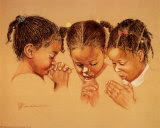Friday, September 2, 2011
RELIVING DIANA, IMAGE, SELF-IDENTITY, AND HUMANITY
By Wilhelmina S. Orozco
The riots in London brought to memory the image of Diana whose death 14 years ago had shocked and created grief all over the world. Even now, in Britain, a survey ranks her first among the most well-loved members of the royalty, the current wife of Prince Charles landing in the bottom of it all. This just goes to show that the hearts and minds of the British people who answered the survey are in the right places.
Why do I reminisce about Prince Di? Well, she was not exactly the typical royalty who was served hand and foot by slaves or those in lower rank. Rather she was and became more strongly a critical royalty who looked into her inner life and the workings of the world. First she denounced through a divorce, her marriage to Prince Charles after she had discovered that her marriage was too “crowded,” a term she had used herself. Secondly, she became critical of the issues in her society – and the world, the most significant act of her was to be photographed with a landmine. That photo was later on used to denounce the rebels who use landmines to advance their causes, because it kills even innocent people. So where is the sanity and rationality of a political cause if it pushes for a total disregard of human lives, whosoever they could be found?
In my article, published in my book, Serimbar, Feminist Reflections and which originally came out in the Chronicle in 1997, right after her “accidental” death, I wrote: “Diana was an uncommon princess in many ways and words, performing her maternal functions while serving as political ambassador of goodwill internationally. She epitomized the woman who was conscious of her royal identity, and yet knew how to use that to make this world a humane place to live in.”
Diana’s life is also relevant to our country now. Her divorcing Prince Charles despite the prospect of actually losing her title (which the people still bestowed on her as she had rather be called, “princess of hearts”) was a very big step for her to take and worthwhile emulating for many Filipino women. She could have been the queen of England, had Charles ascended the throne. Yet, living with a man who has lost love for one she must have found rather masochistic and depriving her of a fuller life that she could possibly still have in this world. After all, God has given talents to everyone regardless of status in life. It all depends not only on society but also on the individual to cultivate those talents. Hence, Diana was a great model of a strong, courageous woman from the upper classes, worthy of being idolized by every woman.
Now, the bills on divorce and the reproductive health are proofs of a dysfunctional society we have and the non-governmental organizations pushing for them, must start researching on current models that can provide a positive push for the bill. In our midst, there could be women of Diana qualities who would not be afraid to stand for these issues. (How about Sharon Cuneta who had her daughter by Gabby Concepcion yet sought a separation from him? Or Miriam Quiambao, the former beauty queen?)
What was apparent in Diana’s divorcing Prince Charles was her adherence to that time-honored principle: monogamy. Yet, she refused that possibility in exchange for leading an authentic life. “For her, it was a non-negotiable issue which many a women with low self-esteem could easily junk in exchange for the glory attending royal status…
“Diana had many qualities putting her on equal terms with Charles. She was also of royal lineage; as well as had her own inheritance from her clan large enough to make her live an independent life. More than all these, she grew up in society that has produced a long line of thinking women as Mary Wollstonecraft who wrote A Vindication of the Rights of Women, Cecily Hamilton – Marriage as a Trade ;; and Sheila Rowbotham – Woman’s Consciousness:Man’s World.”
Besides many women’s groups exist in Britain raising the consciousness of women and making them act on their lives – through workshops, exhibition of their talents, demonstrating for causes like that campaign against nuclear disarmament, lobbying for bills favorable to women that they want to be enacted. There was no way at all that Diana would stay in a stale marriage especially as it was being reported almost daily that Charles was secretly meeting or phoning his mistress.
Hence, after 14 years of her passing away, royalty as a fixture in society is still being discussed. What is the basis of royalty? “By making royalty a permanent fixture, Britain, in effect is creating elitist images in the minds of rulers in Third World countries such as the Philippines. The havoc that image could create is for the latter to aspire for similar ruling in perpetuity, thereby suppressing the rights of other people, women and men, to share in political administration.” (At the time of writing this article, a hot issue in our country was the Charter Change.)
Until now, certain questions persist whether Diana died because of the accident or that accident was pre-planned by certain sectors who refused to have the British royalty “tainted” by the blood of a non-British, the lover of Diana.
No matter the results of the investigations, one thing is sure – Diana has truly lived in the hearts of the people and her life will be long remembered as exemplary of genuine commitments to her own personal values and to international peace.
Subscribe to:
Post Comments (Atom)







No comments:
Post a Comment